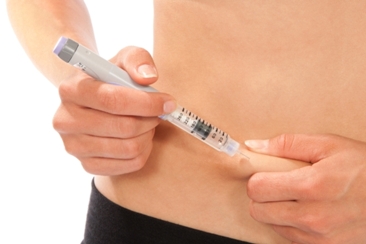The NEPHSTROM project: developing a novel cell therapy for diabetic kidney disease
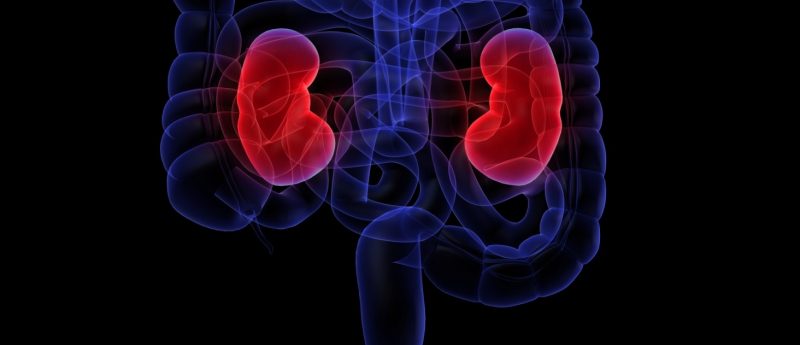
Project leader Prof Timothy O’Brien, from the National University of Ireland, Galway (Republic of Ireland), and Dr Eric Austin, head of the Stem Cells and Immunotherapy laboratory at NHS Blood and Transplant’s site in Speke (Liverpool, UK), discuss the NEPHSTROM project and its upcoming clinical trial for diabetic kidney disease.
Background
NEPHSTROM (Novel Stromal Cell Therapy for Diabetic Kidney Disease) is an exciting research project aiming to use stem cells to treat diabetic kidney disease, which is the most common cause of end-stage kidney disease and has mortality rate of approximately 40,000 people in the UK annually.
Funded by a €6-million grant from the European Union Horizon 2020 programme and including many partners, the project is now setting up a stem cell factory with the NHS in Liverpool (UK) and will be conducting a clinical trial of its allogeneic bone marrow stromal cell product (ORBCEL-M) in 48 Type 2 diabetes patients at high risk of developing diabetes-related kidney problems, in the hope of reducing kidney inflammation and improving kidney function.
About the experts
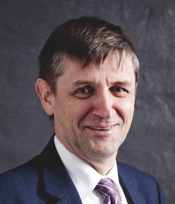
Prof Timothy O’Brien
Professor Timothy O’Brien is Professor of Medicine and Director of REMEDI at NUI Galway. He is consultant physician in Endocrinology and Dean of the College of Medicine, Nursing & Health Sciences at NUI, Galway. Research interests include the translation of basic research findings in stem cell biology to regenerative approaches for peripheral vascular disease and diabetic complications. He is director of the GMP cell manufacturing facility at NUI Galway and has been a PI on gene therapy and cell therapy clinical trials in Galway. Professor O’Brien is coordinator of two current EU funded projects; EU FP7 REDDSTAR (www.reddstar.eu) and EU H2020 NEPHSTROM (www.nephstrom.eu).
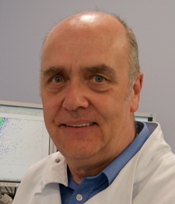
Dr Eric Austin
Eric Austin BSc, PhD (University of Nottingham) has over 30 years R&D and manufacturing experience including GMP cell processing, cell line engineering and GMP manufacturing for clinical trials. He has had oversight of three cell therapy trials collaborating with Prof R Hawkins (University of Manchester, Christie Hospital). Two trials involved GMP production of genetically modified T cells expressing chimeric antigen receptors. The third involved depletion of T-regulatory cells from autologous apheresis collections in renal cancer patients with re-infusion of the remaining T cells. He is currently part of NHSBT’s teams working on several projects that support its commitment to the advancement of regenerative medicine.
Asking the experts
Project leader Prof Timothy O’Brien, from the National University of Ireland, Galway, and Dr Eric Austin, head of Stem Cells & Immunotherapy at NHS Blood and Transplant’s site in Speke, Liverpool, share their insights into the NEPHSTROM project below.
Diabetic kidney disease
What features are characteristic of diabetic kidney disease & how does this disorder develop?
TOB: Diabetes mellitus is associated with complications that affect the blood vessels of the body. As the kidneys filtering function depends on a steady, high blood supply, kidney problems are a particular risk for people with diabetes and approximately 40% of patients with diabetes will develop diabetic kidney disease (DKD). Early DKD is characterized by leaking of the renal filter, the nephron. Later stages of DKD involve progressive and irreversible scarring of the kidney. High blood pressure often accompanies DKD and it may begin quickly or be difficult to control. Kidney damage can begin up to 10 years before symptoms appear. DKD progression accelerates at more advanced stages of chronic kidney disease (CKD) finally leading to end-stage renal disease (ESRD). Symptoms of late DKD or ESRD include: swelling of the ankles, feet, lower legs or hands caused by retention of water; becoming short of breath, for example when climbing the stairs; and tiredness as a result of a lack of oxygen in the blood. A doctor can order tests to detect signs of kidney problems in the early stages and an annual urinalysis is mandatory for any patient with diabetes mellitus. This simple urine test will determine if the small amounts of the protein albumin is leaking into the urine (so called microalbuminuria). Too much albumin leaking is often the first sign of kidney damage and precedes any clinical symptoms or signs by up to 10 years. It is important to note that DKD detected at this stage may be reversible through excellent control of blood glucose levels and use of medications such as angiotensin-converting inhibitors.Once the degree of albumin excretion in the urine increases the condition is no longer reversible and frequently progresses to ESRD.
In most cases of diabetic kidney damage at this stage there is no effective medical treatment. What impact do you think a transformative therapy would have on patients’ health, the healthcare system and the economy?
TOB: The principal impact of NEPHSTROM will be the development of a novel therapy for a common chronicserious condition, which we hope will prevent or delay organ failure by enhancing organ repair and regeneration. The limitations of existing therapies will be overcome by an approach requiring simple intravenous delivery of an allogeneic cell therapy product. We have demonstrated in another EU-funded grant, REDDSTAR, that this approach has encouraging results in pre-clinical models. A therapy that reduces the impact of DKD would improve quality and quantity of life for persons with diabetes mellitus. A therapy that prevents progression of DKD will reduce demand for chronic dialysis and kidney transplantation, with resulting benefits for the entire healthcare system, from the patient to the hospital, health insurer and national healthcare service. These benefits include substantial cost savings, decreased time in hospital, reduced demand for invasive procedures, increased quantity and quality of life, and lower risk of cardiovascular disease, a common comorbidity associated with DKD.
Currently what are the biggest challenges in the field of stem cell therapy for diabetes and, specifically, DKD?
TOB: The delivery of consistent, cost-effective, regulatory-compliant stem cell products is an important pre-requisite for the successful expansion of clinical studies in the stem cell therapy field that includes diabetes and DKD. While a variety of pre-clinical and clinical studies have demonstrated safety and initial indicators of MSC efficacy, very little is known about the exact mechanism of how these cells exert their beneficial effects and this is a significant challenge. Within NEPHSTROM we have a dedicated research team who will investigate the mechanism of action and immune response to MSC transplantation in pre-clinical models and also in clinical patient samples. We will also undertake a health economic analysis of allogeneic MSC treatment, taking into account mortality risk and future treatment scenarios, including dialysis and kidney transplantation. This will demonstrate the economic benefit of our proposed clinical approach. This research will critically inform the optimal design of subsequent Phase 2/3 trials of ORBCEL-M.

Developing the project
Can you please tell us briefly about your careers to date, and how you came to be involved in this project?
TOB: I trained in internal medicine and endocrinology in Cork, Milwaukee, Rochester and San Francisco. Prior to joining NUI Galway, I worked at Medical College of Wisconsin in Milwaukee, the Mayo Clinic in Rochester, Minnesota and the Gladstone Institute of Cardiovascular Disease at the University of California, San Francisco. In 2001 I was appointed as Head of Medicine at NUI Galway and Consultant Endocrinologist at Galway University Hospital. In 2004 I established the Regenerative Medicine Institute (REMEDI) at NUI Galway along with my colleague Professor Frank Barry, with funding from Science Foundation Ireland and I am currently the Director. My research interests include the translation of basic research findings in stem cell biology to regenerative approaches to peripheral vascular disease and diabetic complications in partnership with industry and the health service. I have an active research group at REMEDI NUI Galway investigating the use of mesenchymal stromal cells and endothelial progenitor cells in vascular complications of diabetes mellitus. This was the impetus for the initiation of the REDDSTAR project and it was from positive pre-clinical results in REDDSTAR (in a model of DKD) that the idea of NEPHSTROM was born.
EA: My professional life has been focused on R&D, process development for the manufacture of cellular therapies and immunotherapies. This is a fascinating area of research in which I’ve been privileged to have worked with talented individuals: together we’ve made valuable contributions to the field. The NEPHSTROM project provides the opportunity to work as part of great team working towards a really worthwhile goal.
NHSBT first came into contact with the National University of Ireland, Galway through our relationship with Orbsen Therapeutics Ltd, which is a spinout SME from the Regenerative Medicine Institute (REMEDI) of NUIG. We are partners with Orbsen Therapeutics in the EU FP7 funded project — MERLIN (MEsenchymal stem cells to Reduce Liver Inflammation).
The MERLIN project involves manufacture and processing of cord-derived MSCs for Phase II clinical trial for treatment of liver disease. MERLIN aims to establish the action of MSCs in an archetypal inflammatory liver disease — primary sclerosing cholangitis (PSC). MSCs will undergo in vitro culture expansion, characterization and cryopreservation. Up to eight batches of MSC drug product will be required for the treatment arm (26 patients).
We were invited to support the application for Horizon 2020 funding for the NEPHSTROM project and are very pleased that this has resulted in our continued collaboration with NUIG.
NEPHSTROM is a massive project with many partners. Can you tell us how this project came together?
TOB: Several of the NEPHSTROM project partners (NUIG, ORB, LUMC, LMU and Pintail) had worked together successfully on REDDSTAR. The ORBCEL-M MSC was developed by Dr Steve Elliman at Orbsen Therapeutics (ORB), pre-clinical DKD efficacy results were established in LMU and GMP production of ORBCEL-M was established in LUMC.We invited and are delighted to be working with well-established and very experienced clinical trial centers and GMP production facilities such as NHSBT within NEPHSTROM, and feel that the combination of this expertise will be of great benefit for the success of this ambitious project. NEPHSTROM brings together a multi-disciplinary team of academic and industrial researchers to address a pressing challenge for which there is currently no cure.The leadership of the clinical trial will be provided by Giuseppe Remuzzi at Bergamo, who is a world leader in nephrology.
What was the biggest challenge in going from the preclinical research carried out within the REDDSTAR project into this clinical project?
TOB: The REDDSTAR project has both a pre-clinical and clinical phase which we are moving into at present. I think the biggest challenge with many research projects is progressing within the short timeframe of a research grant, from basic pre-clinical research in animal models to obtaining regulatory and ethical approvals, and then administration of the cell product in a clinical trial at the patient bedside.
What was the biggest challenge you encountered seeking funding from Horizon 2020, and what do you think led to your success?
TOB: I think the biggest challenge is of course the competition for research funding and the number of institutes applying for funding in a particular EC call, which is increasing every year. For example there were nearly 300 initial applications for funding in the same call as NEPHSTROM with only 10 projects receiving funding after the second round.In addition, the minimum thresholds that the EC reviewers use to grade these funding proposals have increased so you need a near perfect score to be eligible for funding. I think with NEPHSTROM we submitted a very ambitious proposal with a sound scientific basis; that had an excellent research and administration team; and had the potential to impact a very significant health problem within the EU.The partnership with Orbsen Therapeutics, an SME we founded out of NUI Galway was also a crucial element.We have worked successfully with Pintail which has also been a major contributor to our success.
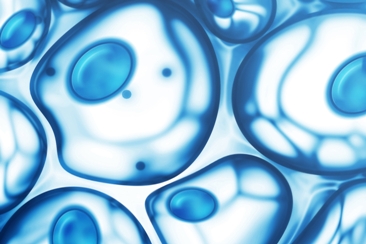
NEPHSTROM clinical trial
The heart of the project is a Phase Ib/IIa clinical trial using an allogeneic mesenchymal stromal cell (MSC) product. What are the indicators you are looking out for in this upcoming trial?
TOB: The core of the project is an early-stage clinical trial, where patients with DKD will receive a single intravenous injection of stem cells; as a result, the project includes clinical trial centers in Ireland (NUI Galway), Italy (Istituto Mario Negri, Bergamo), and the UK (UHBFT, Birmingham and BHSCT, Belfast). The main aim of the trial is to verify the safety of various doses of cells; we also hope to show that important markers of disease are changed (i.e., that the therapy actually works, as well as being safe). The trial will involve 48 patients, all with Type 2 diabetes mellitus, randomized into four groups of 12: one placebo (control) group, and one group each of low, medium and high-dose treatments. The low-dose patients are treated first; when the safety of the low dose has been established, the medium dose patients are treated next and so on. In parallel, measurements are taken to establish the efficacy of the treatment as a therapy for chronic kidney disease. The primary study outcome will be the safety and tolerability of ORBCEL-M compared to placebo. Secondary outcomes will focus on efficacy of ORBCEL-M to slow the progression of DKD. The most significant metric for clinical efficacy will be serial accurate measurements of actual glomerular filtration rate (GFR), as an index of renal function and disease progression. Renal function will be also monitored by conventional measurements of serum creatinine concentration. An additional, clinically-relevant secondary outcome metric of the progression of DKD will be the rate of change of urinary albumin excretion (UAE), which will be measured initially and every 6 months during the trial follow-up using standardized methods.
Do you think the effects of the MSCs in this setting result from their differentiation or their immunomodulatory properties?
TOB: That is an interesting question and has been discussed in detail in the recent scientific literature. Current opinion is that MSCs may for the most part exert their effects via paracrine signaling mechanisms rather than by direct differentiation, so transplanted stem cells release soluble factors (growth factors, immunomodulatory substances) that, acting in a paracrine fashion, contribute to repair and regeneration. Current data suggest that the contribution of MSC differentiation to repair is limited due to poor engraftment and survival of MSCs at the site of injury. To illustrate this point we have not found evidence of biodistribution of ORBCEL-M to the kidney in our pre-clinical model of DKD despite evidence of therapeutic efficacy of this MSC. This hypothesis is further supported by the observation that MSC-conditioned medium also enhances tissue repair.
What steps have you taken to try and ensure you are developing a product that could be easily scaled up for application in the routine clinical setting?
TOB: NEPHSTROM will develop and validate a new combined manufacturing platform that improves the consistency and reduces the cost of the MSC therapeutic, making it a viable option for routine clinical use. This will involve the development of the first ‘closed-automated’ GMP method of MSC isolation and expansion, and the creation of a network of four European cell production centers, all using the Terumo BCT Quantum cell expansion system and standardized reagents and processes. This technology will enable the upscaling of consistent, regulatory-friendly MSC production.
EA: NHSBT is using the Terumo BCT Quantum Cell Expansion System in the manufacture of cells. The use of an automated cell culture platform should support scalability, facilitating the delivery of the product as a routine therapy.
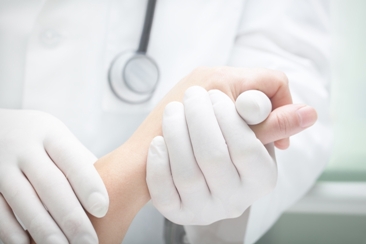
Looking ahead
Should this clinical trial be successful, what would the next steps be?
TOB: A successful trial, demonstrating safety and indicating efficacy, would provide the evidence needed to progress to a more advanced trial, with a larger patient population, which would focus on the efficacy of the treatment. It would also enable us to apply for early market approval in several key markets, where regulatory approvals for currently-untreatable diseases are fast-tracked. There is very strong research that suggests that stem cells can be beneficial in the treatment of other chronic non-communicable diseases, with impact on (among others) inflammation, auto-immunity, oxidative stress, and high blood pressure. A good clinical trial result for a defined stem cell product would provide an excellent precedent for developing treatments for lupus, coronary artery disease, heart failure, asthma and other conditions.
Are there any other projects or trials in development that you are particularly excited about?
TOB: We are also moving to a first-in-man clinical trial in the REDDSTAR project based on exciting pre-clinical topical results. The REDDSTAR trial is a Phase Ib single-dose study to examine the safety of topically applied allogeneic MSCs (ORBCEL-M) seeded in a collagen scaffold to patients with non-healing neuroischemic diabetic foot wounds. This trial will take place at the Bispebjerg Hospital in Copenhagen, coordinated by the Steno Diabetes Center, Copenhagen, a REDDSTAR partner.
In our Galway HRB clinical research facility and using stem cells manufactured in our local GMP cell manufacturing facility (CCMI), we have recently begun a first-in-man clinical trial of autologous plastic-adherent stromal stem cells (PA-SSCs) that are applied intramuscularly to the limbs of no-option patients with critical limb ischemia (CLI trial). These are a patient cohort who would benefit greatly from novel treatment strategies if initial patient safety is confirmed.
REMEDI PIs are also involved in a Phase IIb clinical trial to assess the safety and efficacy of autologous PA-SSCs in the treatment of advanced osteoarthritis of the knee (ADIPOA-2). A clinical trial is also proposed as part of the EU FP7 project Visicort, where the strategy is to design an optimized immunomodulatory stromal stem cell therapy in high-risk human corneal transplant (CT) recipients.
EA: I recently managed the production of an IMP known as Cell Bandage for Azellon Theraputics, a cell therapy company. This project required expansion of MSCs from autologous bone marrow, seeding of the MSCs onto a collagen sponge which was then transplanted back to the patient as part of a Phase I trial for repair of meniscal tears.
This initial work has been used as the foundation for further development. NHSBT and Azellon Therapeutics are currently collaborating with the University of Liverpool and Cell Therapy Catapult on the Innovate UK funded project “Cell Bandage for Repair of Torn Meniscus — development of an improved product and a manufacturing process suitable for its effective commercialisation”. I’m responsible for the production of a GMP Working Cell Bank to be used in the production of an allogeneic ‘Cell Bandage’.
How do you see the stem cell therapy field progressing in the next 5 years?
EA: There will inevitably have to be changes in how stem cells are manufactured to enable more efficient supply of large quantities of cells at the scale that will be required for therapeutic doses. I expect to see improved methods for harvesting, washing and concentration of cells in particular within closed systems. The challenge for companies will be to develop equipment that will deliver higher yields and improved viability in such closed systems and do so cost-effectively. My concern is that novel therapies that could revolutionize medicine won’t be adopted without the appropriate cost of goods.
TOB: I agree, the delivery of consistent, cost-effective, regulatory compliant stem cell products is an important pre-requisite for the successful expansion of clinical studies in the stem cell therapy field, and I hope with NEPHSTROM we are moving a step closer to this. There have been a variety of clinical studies of MSCs which have provided promising indicators of clinical efficacy, but if we are to move to larger-scale clinical studies and even successful cell products we need production systems that can supply the MSCs in the quantities and quality required for full therapeutic validation.It is an exciting time for the stem cell therapy field and the indicators are that MSCs are a promising therapeutic strategy for a variety of disease conditions.
“It is an exciting time for the stem cell
therapy field and the indicators are that MSCs are a promising
therapeutic strategy for a variety of disease conditions.”
